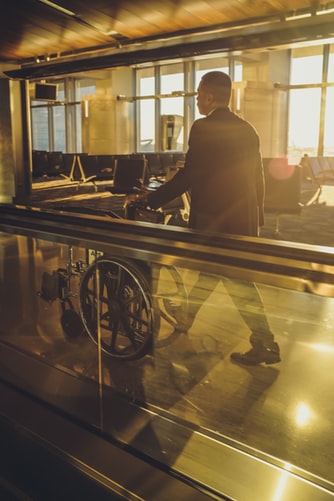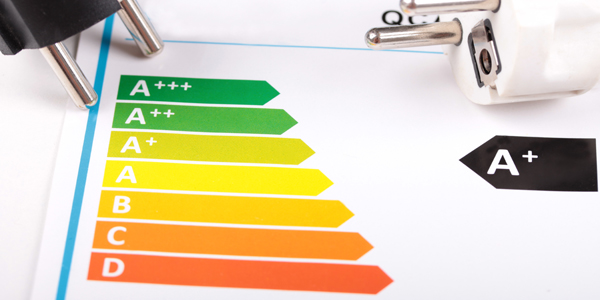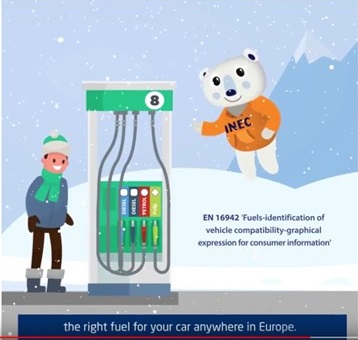Discover how ANEC helps improve the everyday lives of consumers!
Approval of CEN/TS 17876 'Child Care Articles - Tricycles - Safety Requirements and Test Methods'
In July 2024, CEN approved CEN/TS 17876, a technical specification outlining safety requirements and test methods for tricycles used by children. ANEC supported the development of this specification, emphasizing the importance of child safety in product design and standardisation.
Improved Pushchair Standard
In early 2024, ANEC actively contributed to the development of EN 1888-3:2023, titled "Child care articles - Wheeled child conveyances - Part 3: Pushchairs intended for leisure sport activities". This standard specifies safety requirements for pushchairs used in activities such as running, jogging, or skating. Notably, ANEC's advocacy led to the inclusion of visibility requirements, such as reflectors, enhancing the safety of these products during low-light conditions. ANEC is now advocating for similar visibility requirements to be incorporated into related standards, EN 1888-1 and EN 1888-2, to ensure comprehensive safety measures across all pushchair types.
Cybersecurity for Consumer Internet of Things
ANEC welcomed the approval of ETSI EN 303 645 V3.1.2, titled "Cyber Security for Consumer Internet of Things: Baseline Requirements". This standard establishes a security baseline for internet-connected consumer devices, aiming to mitigate cybersecurity risks and protect consumer data. ANEC's involvement ensured that consumer interests were central to the development of these cybersecurity requirements.
ANEC wants to raise standards for all consumers
Over 190 million older people, and 80 million persons with disabilities, cannot use many of today’s mainstream products and services in Europe. They cannot get on a bus, enter a bank, or find their way in an airport; they cannot vote online, or use apps… The European Union is far from being accessible to ALL consumers.
For all too long, ANEC has been campaigning for regulatory measures, underpinned by standards, to improve access to everyday products and services for consumers of all ages and abilities. Standards can help as they determine the way in which a product is designed, or a service is provided, before it is placed on the market.
Everyone should be able to use websites and apps

A world without internet? It’s almost impossible to imagine! Yet this is the reality for many consumers in Europe today. More and more services are provided online. Online provision is cost-effective and should be convenient for consumers. Often essential services, such as education, health, social protection, employment, transport & banking, are now available (sometimes exclusively) through the internet.
Yet currently not even one third of public websites are accessible. This means many European citizens, especially those with visual impairments and older people, are denied access to basic services. They are excluded from taking fullest advantage of the internet because websites are not designed for them.
Several years ago, ANEC joined forces with organisations from the disability movement in calling on the European Commission to propose legislation that would ensure all consumers have access to online public services. We were delighted when, in October 2016, the ‘Web Accessibility Directive’ (Directive (EU) 2016/2102 on the accessibility of the websites and mobile applications of public sector bodies) was adopted by Council and Parliament.
Separately, through our participation in the Web Accessibility Expert Group (‘WADEX’) stakeholder sub-group, we contributed to the drafting of implementing acts under the Web Accessibility Directive. Our participation helped safeguard that the acts responded to the real needs of persons with disabilities, and were not unduly influenced by the providers or users of web services.
EN 301 549 (version 2.1.2) ‘Accessibility requirements for ICT products & services’ became the first Harmonised Standard to help meet compliance with the EU legal requirements on web accessibility, referenced in the Official Journal of the EU as providing presumption of conformity to Directive (EU) 2016/2102. ANEC has contributed to the standard since its inception.
In November 2019, EN 301 549 (version 3.1.1) was published, adding new elements, such as WCAG triple A, RealTimeText interoperability, and ICT with video capabilities.
We help design accessibility through standards….
Standardisers often do not have accessibility in mind when developing standards. This is unfortunate as standards have a key role in making products and services accessible so that they can be used, not only by mainstream consumers, but by a market that includes older people and persons with disabilities.
As long ago as 2001, ANEC led the drafting of the first edition of ISO/IEC Guide 71 with the aim to help standardisers write standards that would lead to more accessible products and services. We also contributed to its revision, published as ISO/IEC Guide 71: 2014 ‘Guide for addressing accessibility in standards’, and as ITU-T Supplement 17:2014 by the International Telecommunication Union.fenvipo.
In Europe, the Guide 71 is adopted as the identical CEN-CENELEC Guide 6.
In October 2018, ANEC welcomed the approval of EN 17161 'Design for All - Accessibility following a Design for All approach in products, goods and services - Extending the range of users'. We were heavily involved in campaigning for the adoption of the standard and contributed significantly to its drafting. It was prepared by CEN-CLC JTC 12 ‘Design for All’ in response to Mandate M/473. The mandate asks for Design for All to be included in all relevant standards initiatives, and in training material on accessibility standardisation.
….. and in the ICT sector
The issue of cognitive disabilities was not considered until recently in standardisation, with the ICT sector no exception.
We proposed and led work in a dedicated ETSI Task Force to identify the functional needs of people with learning disabilities (dyslexia, dementia, and similar cognitive impairments) when using mobile ICT devices. The standards, TR 103 349 ‘Human Factors (HF): Functional needs of people with cognitive disabilities when using mobile ICT devices for an improved user experience in mobile ICT devices’, and EG 203 350 ‘Human Factors (HF): Recommendations: for the design and development of mobile ICT devices and their related applications for people with cognitive disabilities’ were published at the end of 2016.
We go international 4 for a barriers-free world
 ANEC contributed in the development of an international standard on access to the built environment first published in 2012, ISO 21542 ‘Accessibility and usability of the built environment’. This ISO standard determines how public infrastructure (banks, schools, airports, railway stations, etc) are to be designed and built so that people can enter and leave the premises independently, regardless of age or ability.
ANEC contributed in the development of an international standard on access to the built environment first published in 2012, ISO 21542 ‘Accessibility and usability of the built environment’. This ISO standard determines how public infrastructure (banks, schools, airports, railway stations, etc) are to be designed and built so that people can enter and leave the premises independently, regardless of age or ability.
Child Safety
ANEC helps ban cigarette lighters dangerous for children
 Fire is the biggest cause of accidental death, with a UK study finding 46% of fatal accidents incurred by children to be caused by fire. In the past, many of these fires were attributed to children under five years of age playing with cigarette lighters that were not fitted with childproof devices.
Fire is the biggest cause of accidental death, with a UK study finding 46% of fatal accidents incurred by children to be caused by fire. In the past, many of these fires were attributed to children under five years of age playing with cigarette lighters that were not fitted with childproof devices.
ANEC was instrumental in drafting the standard that ensures child-resistant mechanisms on lighters are fitted to prevent such accidents, EN 13869 ‘Lighters – Child resistance for lighters – Safety requirements and test methods’. Following our work and campaigning, the European Commission and Member States decided in 2008 to ban the sale of most types of lighters that did not comply with this standard.
But our work didn’t stop there. We ensured the 2016 revision of EN 13869 set even stricter requirements.
Lowering risk of strangulation from blind cords
Roller blinds, or other types of window blinds, are very common in homes. Unfortunately, these blinds pose a serious threat to children who run a risk of injury - even strangulation - from the cords used to operate them. Children around the world have died after being becoming entangled in window cords.
In 2010, ANEC alerted the European Commission to the need to improve the European standard for blinds. The Commission heard our call and responded with a Decision in July 2011 which set out safety requirements to be met by standards in addressing risks posed to children by internal blinds and corded window coverings.
We participated in the development of the standards for blinds as the only child safety experts contributing to the work. The standards were published in February 2014 as EN 13120/A1 ‘Internal blinds – Performance requirements including safety’; EN 16434 ‘Internal blinds - Protection from strangulation hazards – Requirements & test methods for safety devices’, and EN 16433 ‘Internal blinds - Protection from strangulation hazards - Test methods’.
For the blinds already installed in homes, public awareness is key. We therefore supported the OECD #SafeWindowCovering campaign in 2016.
We help prevent children falling from windows….
Children have a natural curiosity and do not always understand the presence of danger. It is therefore often necessary to protect them from potential hazards with specific products, such as the ones intended to be mounted on to another product to avoid certain accidents. This is the case, for instance, of a locking device mounted to a window, which is meant to prevent children from opening the window and possibly falling.
In 2003, ANEC commissioned a study to develop proposals for safety requirements and test methods for locking devices for windows and other child protective products. Following our research, CEN/TC 398 was created to develop standards for child protective products designed to be attached or mounted to other domestic products. Its work led to adoption in 2011 and 2012 of two European standards to help prevent children falling from windows or balconies: EN 16281 ‘Child protective products – Consumer-fitted child resistant locking devices for windows and balcony doors – Safety requirements and test methods’, and EN 13126-5 ‘Building hardware - Hardware for windows and door height windows - Requirements and test methods - Part 5: Devices that restrict the opening of windows and door height windows’.
….and stop other common domestic accidents
Data from the German Injury Database collected between 2006 and 2012, showed that, for children under one year of age, doors and door thresholds were involved in 80% of accidents where children crushed their fingers or hands.
ANEC therefore contributed to a European standard on finger-protection devices for doors, prepared by CEN/TC 398 and published in 2015: EN 16654 ‘Child protective products – Consumer-fitted finger-protection devices for doors - Safety requirements & test methods’.
ANEC continued its work with the development of a standard for safety devices to keep the doors of drawers or cupboards closed, or to restrict their opening by young children. This is particularly important in preventing the ingestion of poisonous cleaning substances often found in the home. The standard for child-resistant locking devices for cupboards and drawers was the third developed by TC 398: EN 16948 ‘Child protective products – Consumer-fitted child-resistant locking devices for cupboards and drawers - Safety requirements and test methods’.
ANEC scores on standard for moveable goal posts
Children in the EU have died due to falls of non-fixed goal posts. For many years, ANEC voiced its concern as the standard for football goalposts dealt only with goalposts used during organised activities, such as training or competition. It did not address the use of these products during non-organised or leisure activities.
As a result of our concern, CEN/TC 136/WG22 ‘Gymnastic equipment’ - was created to work on new European standards for portable goals.
A first standard, EN 16664 ‘Playing field equipment — Lightweight goals — Functional, safety requirements and test methods’, was adopted in April 2015, and EN 16579 ‘Playing field equipment - Portable and permanent socketed goals - Functional, safety requirements and test methods’ was adopted in October 2017.

. . . and play areas
The publication in 2017 of the playground equipment standards, EN 1176-1 ‘Playground equipment and surfacing. General safety requirements and test methods’, EN 1176-4 ‘Playground equipment and surfacing. Additional specific safety requirements and test methods for cableways’ & EN 1177 ‘Impact attenuating playground surfacing. Methods of test for determination of impact attenuation’, represented a major achievement for ANEC.
We influenced the shaping of the requirements of the standards to offer key improvements in the levels of protection offered by playgrounds.
Diving into work on pools
Drowning is one of the leading causes of death among toddlers in Europe. To keep children safe and prevent drowning accidents at home, ANEC participated in the development of six European standards for domestic swimming pools, all adopted in 2015.
Three standards in the EN 16582 series deal with requirements for in-ground pools and above-ground pools; three standards in the EN 16713 series address requirements & test methods for filtration systems; circulation systems & treatment of water systems.
A further standard, EN 16927 ‘Mini pools - Specific requirements including safety and test methods for mini pools’ was adopted in 2016, and EN 17125 ‘Safety requirements and test methods for domestic spas/hot tubs for indoor and/or outdoor use’ in 2017.

Children should play with toys, not chemicals

Younger children are continually in contact with toys. Toys are not only fun, but are often educational and contribute to a child’s development. But do we know what is in the toys our children play with?
Unfortunately, many dangerous substances are still allowed in toys. Despite our repeated concerns about the inadequate chemical requirements for toys, the revised Toy Safety Directive, adopted in 2010, does not do enough to protect children from exposure to dangerous chemicals. We persisted and, upon our request, the European Commission set up a subgroup on chemicals to examine improving the chemical requirements of the Toy Safety Directive. ANEC alone represents the consumer interest in this group.
ANEC continues its efforts to reduce our children’s exposure to hazardous chemicals in toys. In 2016, ANEC presented the group with proposals and recommendations on possible limitations in the Toy Safety Directive for two specific chemicals: formaldehyde and aniline. The latter has been classified as a (suspected) non-threshold carcinogen, i.e. a substance that should not be present in toys. Both proposals were accepted. The Commission also decided to decrease limit values for bisphenol A, phenol, and chromium.
Our attention turned to boron in 2018, with the craze for slime toys. Tests by consumer organisations showed the rate of migration of boron from many slime toys exceeded the limits set in the Toy Safety Directive. With our sister organisation, BEUC, we presented these findings to the European Commission, leading to the Commission initiating a joint market surveillance study (CASPSlime2019) the following year.
In the drafting of EN 71-7/A1 ‘Safety of toys – Part 7: Finger paints – Requirements and test methods’, published in 2017, we were successful in seeking alignment of the standard with the Cosmetics Regulation ((EC) 1223/2009) so prohibiting several substances used previously in finger paints.
Safer children's clothes
 Hooded sweatshirts, coats, or jackets often feature cords or drawstrings to improve the fit of the garment. On children’s clothes, these present a choking and strangulation hazard, particularly when used near the head or neck areas. It was only following a request from ANEC, that a standard was developed banning use of cords and drawstrings in the head and neck area of clothes intended for children below the age of 7 years: EN 14682 ‘Safety of children's clothing - Cords and drawstrings on children's clothing - Specifications'.
Hooded sweatshirts, coats, or jackets often feature cords or drawstrings to improve the fit of the garment. On children’s clothes, these present a choking and strangulation hazard, particularly when used near the head or neck areas. It was only following a request from ANEC, that a standard was developed banning use of cords and drawstrings in the head and neck area of clothes intended for children below the age of 7 years: EN 14682 ‘Safety of children's clothing - Cords and drawstrings on children's clothing - Specifications'.
Digital Society
ANEC helps avoid hearing loss
 Personal music players (PMPs) were popular for many years, but became ubiquitous with the arrival of the smartphone. Surprisingly, no volume limits were set in the standards for music players, with some capable of a time-unlimited 120dBA. This compared with a maximum of 30 seconds for workers to be exposed to a noise level of 115dBA, according to legislation on health & safety at work. The Scientific Committee on Emerging and Newly Identified Health Risks (SCENIHR) warned that 5 to 10% of PMP listeners - or up to 10 million people in the EU – were at risk of permanent hearing loss within 5 years, due to the excessive use of personal music players at dangerously high volumes. Children and teenagers were identified as being at special risk.
Personal music players (PMPs) were popular for many years, but became ubiquitous with the arrival of the smartphone. Surprisingly, no volume limits were set in the standards for music players, with some capable of a time-unlimited 120dBA. This compared with a maximum of 30 seconds for workers to be exposed to a noise level of 115dBA, according to legislation on health & safety at work. The Scientific Committee on Emerging and Newly Identified Health Risks (SCENIHR) warned that 5 to 10% of PMP listeners - or up to 10 million people in the EU – were at risk of permanent hearing loss within 5 years, due to the excessive use of personal music players at dangerously high volumes. Children and teenagers were identified as being at special risk.
In 2007, ANEC embarked on the campaign, ‘Pump down the volume!’, to introduce safe sound limits in the standards for PMPs. This encouraged the European Commission to issue Mandate M/452 to develop standards satisfying the safety and health requirements of EU product legislation covering PMPs and mobile phones with a music playing function.
Four years later, after much hard work from ANEC’s experts, new safety requirements for PMPs were included in the European standards, EN 60065:2002/A12:2011 ‘Audio, video & similar electronic apparatus - Safety requirements’ and EN 60950-1:2006/A12:2011 ‘Information technology equipment - Safety -- Part 1: General requirements’.
The average sound pressure limit set by default is now 85dBA, a level that is considered to be safe under all conditions of use. It is still possible for consumers to increase the limit up to a maximum average of 100dBA, but in this case, users are informed by warnings, repeated every 20 hours of listening time, about the risks of listening music at such a high volume. The 85dBA volume limit entered into force in 2012.
We are now working on a more sophisticated dose-based system with automatic exposure limiter to improve the listening experience while maintaining a high level of protection.
Phones need to meet consumers’ expectations
When considering the exposure to Electromagnetic Fields (EMF) from mobile phones, ANEC thinks it is not enough to address the final purpose of the product in the design, but also how and under what conditions consumers will most likely use the product. This is the so-called “foreseeable use”. Only when foreseeable use is addressed can consumers be adequately protected. We asked that the EU legislation covering exposure to EMF– the Radio Equipment Directive (2014/53/EU) - should require that consumers’ foreseeable use be taken into account.
ANEC influenced a key agreement between the European Commission and Standardisation Organisations on the drafting of the EMF standards. Following a request for clarification by ANEC, it was confirmed the limits set in a Council Recommendation of 12 July 1999 on the limitation of exposure of the general public to electromagnetic fields (0Hz to 300GHz) (1999/519/EC) should be respected by standards. We welcomed this decision, reflecting our view that such limits can be set only through legislation and not through the standards development process.
Separately, we have urged manufacturers to provide a common external power supply (CEPS) for mobile phones (and products with similar consumption and charging needs, such as tablets). Despite a voluntary agreement in 2009 between the industry and the Commission, Apple exploited a loophole in the agreement which permitted it to use an adaptor in the introduction of its new connector: Lightning of 2012. The present plethora of chargers – both within brands and among brands – is an unnecessary cost to consumers in their direct (or implied) purchase. It also represents a significant cost to the environment in the extraction of the raw materials for the construction of chargers and in their disposal.
Nevertheless, ANEC is using the Radio Equipment Directive (RED) as a means to achieve the common charger. In response to our demands, the European Parliament took a Resolution in January 2020 seeking a common charger for mobile radio equipment, and that the Commission appears ready to make a legislative proposal in the last quarter of 2020.

ANEC respects your privacy
Modern technology evolves very quickly. For many consumers, it is difficult to keep up and feel confident when using new technologies. We have often expected new technologies will protect our personal data by default, but this is not so and has been confirmed by several high-profile cases in past years. Consumers are often required to take measures to protect their data, when data protection and privacy should be a given.
Integrating privacy and security in the development of technologies from the outset would help ensure data is not at risk, particular where the user can be considered vulnerable.
We contributed to standards on RFID in answer to Mandate M/436: EN 16570 ‘Information Technology – Notification of RFID – The information sign and additional information to be provided by operators of RFID application system’; EN 16571 “Information technology – RFID privacy impact assessment process”, which requires manufacturers and providers to manage privacy & personal data protection issues through privacy-by-design.
These provide a procedure to be used in the use of RFID chips or tags, and a supporting logo to warn consumers.
A landmark in consumer IoT security
ANEC helped draft the first globally-applicable standard for consumer IoT security:. ETSI TS 103 645 was published in February 2019. It establishes a security baseline for internet-connected consumer products, and provides a basis for future IoT certification schemes.
We believe the benefits of IoT can be achieved only if products and services are designed with trust, privacy and security built and so able to reassure consumers that they are safe and secure to use. The standard focuses on technical and organisational controls that matter most in addressing significant and widespread security-shortcomings, and ANEC trusts it will become the landmark specification for consumers and industry alike.
Ethics in AI and digital applications
A member of the EC High-Level Expert Group on Artificial Intelligence, ANEC ensured the Ethics Guidelines developed by the HLEG safeguarded the consumer interest, noting that its membership is dominated by the digital industry. ANEC was also appointed liaison of the CEN-CENELEC Focus Group AI with HLEG. It remains paramount the voice of consumers is heard in the debate to ensure consumer trust and confidence. The HLEG also developed policy & investment recommendations for trustworthy AI, presented to the Commission on 26 June 2019. Standards feature in one of the recommendations to deliver trustworthy AI.
Separately, ANEC added the consumer perspective to the CEN Workshop Agreement, CWA 17147 ‘Guidelines for evaluation of installed security systems, based on STEFi criteria’. The criteria introduce ethical, social, legal aspects in the certification of security products, systems and services.
Draining the swamp of fake news
Fake news has always existed, but social media has multiplied the harm it can do. From political elections to brand favouritism, consumers now often doubt the information and news they receive.
ANEC participated in the development of a CEN Workshop Agreement (CWA) which sets a verifiable set of rules and benchmarks for trustworthy news and journalism. Known as the Journalism Trust Initiative, and led by Reporters Without Borders (RSF), Global Editors Network (GEN), European Broadcasting Union (EBU) and Agence France-Presse (AFP), the Workshop delivered CWA 17493 in December 2019.
ANEC is pleased to have contributed to this initiative and hopes it will bring clarity to the media landscape, and increase consumer trust in the media. In 2020, the standard will be made available in a form so that any provider can take a self-assessment and publish the results if they wish. A framework for third-party certification is also being planned.
Domestic Appliances
Safe and accessible domestic appliances for all
The first generation of European standards for domestic electrical appliances – the EN 60335-2 series – featured a ‘limitation clause’ or ‘exclusion clause’, which presumed that young, elderly or disabled people would use appliances in compliance with these standards only under supervision.
In other words, vulnerable consumers (children, older people & persons with disabilities), were not expected to use domestic appliances - such as refrigerators, vacuum cleaners, fans, and many more -unless supervised by someone else!
ANEC used the results of a Technical Study it commissioned in 2003 to show this exclusion clause was unfair and discriminatory. This led to the creation of a dedicated working group (CENELEC TC 61 WG 4) to revise the standards so that they would consider the safe use of electrical domestic appliances by ALL consumers.
ANEC further commissioned studies in 2004, 2005, 2006, 2008 and 2009 to contribute to the standardisation work. For different appliances, we submitted lists of hazards and risks specific to children, older people and persons with disabilities that may not have been covered by safety requirements in the first European standards. We also provided technical solutions that would enable the safe use of domestic appliances by vulnerable consumers.
Ending in 2015, the work has enabled millions of appliances sold annually to feature improved levels of accessibility and safety. Thanks to ANEC, ovens, toasters, kettles, heaters, hairdryers, and very many more household electrical appliances can now be used safely by everyone.
With Consumers International (CI), ANEC is now working to revise the international (IEC) standards for these appliances, so that consumers from around the world can benefit from the improvements won at the European level.
Added protection for children
A difficult and contentious question for many years has been how to define what makes a product “child-appealing”, especially in the context of domestic electrical appliances. The term “toy-like”, often proposed by industry partners, was insufficient for ANEC, as young children are habitually attracted to play with appliances that are functional in appearance and do not resemble toys (or even toy appliances).
A breakthrough came in 2019, again thanks to ANEC. CENELEC TC 61 adopted criteria to help define whether a product is “child-appealing”, with the criteria split into two groups:
- one group covering the elements that are thought the most important: the decoration of the appliance and its shape. If one of these criteria is met, the appliance is “child-appealing”;
- a second group covering non-functional lights, sounds and movements. If more than one of these criteria is present, the appliance is “child-appealing”.
If an appliance is deemed child-appealing, it will have to meet requirements related to the temperature of accessible surfaces, accessibility of moving parts and the temperature of any liquid it might contain.
We are of the firm belief that the adoption of these criteria will help to ensure the youngest consumers are better protected in the home environment.
ANEC shouts out on the “silent killer”
Carbon monoxide (CO) is a colourless, odourless gas that can be poisonous. When carbon-based fuels do not burn properly, poisonous excess CO is produced. When CO enters the body, it prevents blood from taking oxygen to cells, tissues and organs. With a mortality rate of 2.24 for each 100.000 persons, CO kills more people annually than AIDS or skin cancer in Europe. Studies show fatal CO intoxications have increased during past years, among elderly people in particular.
ANEC was successful in ensuring the amendment of EN 1860-1/A1 ‘Appliances, solid fuels and firelighters for barbecuing – Part 1: Barbecues burning solid fuels - Requirements & test methods’ was adopted in 2017. The amendment introduces a safety symbol to warn consumers not to use a barbeque indoors because of the risk of CO poisoning.
Some consumers use barbecue grills to heat a tent or caravan, or to cook in case of rain. In order to raise awareness in April 2018, we launched the leaflet, ‘Be Safe This Summer’, to help educate children and young adults on the dangers of carbon monoxide poisoning, and to warn that ‘Misuse of a BBQ grill can kill!’. The leaflet is available in English, French, Romanian, Spanish, Italian, Polish and Russian, and can be found on the campaign page, which details other ANEC activities related to the prevention of CO poisoning. The leaflet was re-launched in June 2018, just before the start of the FIFA World Cup.

Services
Customer contact centres (call centres)
ANEC participated in the development of EN 15838:2009 on ‘customer contact centre quality’ and supported its adoption. Nevertheless, we were concerned by the focus of the standard on setting requirements for the contract, and the relationship between the customer contact centre and the contracting company. We therefore participated in ISO work that led to the adoption of ISO 18295:2017 which we welcomed as an improved alternative to EN 15838 which ISO 18295 superseded at European level.
ANEC posts success on cross border parcel delivery
Cross-border online shopping offers potential benefits to European consumers, including financial savings and a wider choice of goods and services. The European Consumer Centres Network (ECC-Net) estimated “consumers could save €11.7 billion annually if they could choose from the fullest possible range of goods and services from across the EU’s (then) 28 countries when shopping online”.
Despite these potential benefits, an ANEC survey found only 10% of people regularly shop online from other EU countries, compared with 63% who regularly do so in their home country. Although the EC has implemented several pieces of legislation during recent years in a bid to create a Digital Single Market and encourage cross-border trade, we showed significant barriers to cross-border online shopping still exist.
ANEC used its study to define a position on an EC proposal from 2016 for a Regulation on cross-border parcel delivery services. Although we appreciated the proposal, we believed its level of ambition needed to be higher. Accordingly, we used our position to encourage Parliament to make amendments, with the revised proposal adopted by plenary in March 2018. In May 2018, we welcomed the co-agreement of the Council to the adoption of Regulation (EU) 2018/644.
ANEC helps ensure a universal postal service
The liberalisation of the postal market across Europe, as well as the privatisation of postal services and the increasing competition in domestic markets, were potentially putting at risk a significant number of customers, by either reducing the quality of the service or with increasing prices. ANEC has worked over the past years to ensure all consumers receive a universal postal service of good quality.
Further to our continued work in the standards committees on Postal Services addressing namely the quality of services, ANEC contributed significantly to revision of the standard that provides a (mandatory) pan-EU measurement method to track the transit time of priority letters: EN 13850, ‘Measurement of transit time of end-to-end services for single piece priority mail and first-class mail’.
ANEC shows action needed on cross-border healthcare
The EU has legislation in place that offers consumers to benefit from the greatest medical expertise and best available treatment, regardless of where they live, study or work. The ageing population, and growing prevalence of chronic disease, is putting strain on national healthcare systems, as is the demand for affordable, timely and quality healthcare. In this context, the ability to choose from service providers in other Member States offers clear potential benefits for patients.
In mid-January 2018, ANEC published a technical study, based on a survey of European consumers. Contrary to the EU legislation in place, our study proves there is an urgent need to give consumers clear guidance on cross-border healthcare options, as well as for there to be effective systems of consumer redress in case of difficulties. It confirms legislation that gives EU citizens the right to cross-border healthcare offers many potential benefits but is not working well. The study concludes with recommendations to authorities.
ANEC shapes ISO 20488 on online reviews
Online consumer review sites are widely used by consumers, and are becoming embedded in both consumer behaviour and business models. An ECC-Network survey showed 82% of respondents read reviews before shopping. Tools for increasing consumer awareness should not, however, mislead consumers. Unfortunately, fake reviews may represent up to 16% of all reviews posted.
In order to help ensure consumer trust in online reviews, ANEC played a leading role in drafting ISO 20488 ‘Online consumer reviews — Principles and requirements for their collection, moderation and publication’, published in June 2018. The standard details best practice in order to improve the reliability of online reviews and minimise fake reviews. It requires processes to ensure transparency, verify author authenticity, and the moderation of review content. We look forward to seeing use of the standard worldwide.
Sustainability
“A” was, is, and will always be best!
 More and more, people are realising the undeniable impact our everyday lives have on the planet. Every product we buy or service we contract has a cost on the environment, and consumers are now considering in their purchasing decision not only the price and the quality but also the environmental aspects of a product or service. But how can we help consumers in their decision if it is impossible for them to understand which product is most energy efficient?
More and more, people are realising the undeniable impact our everyday lives have on the planet. Every product we buy or service we contract has a cost on the environment, and consumers are now considering in their purchasing decision not only the price and the quality but also the environmental aspects of a product or service. But how can we help consumers in their decision if it is impossible for them to understand which product is most energy efficient?
At its onset, the EU energy label was praised by ANEC and all consumer organisations, for its undoubted success in encouraging consumers to make the most sustainable choice thanks to the message ‘Buy A’ given by the A-G scale.
After the revision of the related directive in 2010, the well-understood energy label was turned into a confusing scheme. It allowed different scales to be used to show the energy efficiency of a product depending on category; this meant that products from a specific group, for example vacuum cleaners, could be labelled from "A to G", while products from another category like refrigerators, could be labelled A or A+, A++ and even A+++, without any consistency among product groups. This made it impossible for consumers to understand and identify which product in any one group was the most efficient.
ANEC and its sister organisation, BEUC, worked strenuously for a reorientation of the Energy Label to help consumers make the most sustainable decisions in their purchases, and encourage manufacturers to innovate in making ever more energy-efficient products. In 2015, the European Commission put forward a good initial proposal which included some of our asks. Following two years of negotiations, which ANEC followed closely, the three EU institutions struck a deal in 2017 on the EU Energy label. The well-known A-G scale will return to the shops! Our only regret is this return will be phased between 2020 and 2030, depending on the product.
Ecodesign saves money for nothing!
A study conducted by ANEC & BEUC in late 2016 evaluated the financial savings resulting from Ecodesign and Energy Labelling for the average European household to be 330€ This is because Ecodesign regulations require manufacturers to produce less energy-hungry products. And if consumers choose products in the top class of the Energy Label, savings can increase to over 450€ per year. ANEC and BEUC both represent the consumer interest in setting of implementing measures for Ecodesign, while ANEC is active in the supporting standards work on energy-using products.
ISO/IEC guided on packaging by ANEC
Product packaging needs to be effective and efficient for business and consumers. Some considerations include containment, protection, handling, transport, storage, convenience, information and presentation. Packaging must also reflect sustainable use of resources to ensure the optimisation, reuse and recovery of packaging.
An expert from the ANEC Child Safety and Domestic Appliances Working Groups, was co-Convenor of the IS0 working group that led revision of ISO/IEC Guide 41 ‘Packaging - Recommendations for addressing consumer needs’, published in October 2018.
The Guide reflects developments and best practice in labelling, recycling, risk management and consumer vulnerability. It is a notable step forward in seeking the goals of efficiency and effectiveness.
Environmental performance evaluation
 ANEC participates in ISO/TC 207 ‘Environmental management’, the technical body where the leading international environmental standards are developed. A key standard we have influenced was the revision of ISO 14031 ‘Environmental management -- Environmental performance evaluation – Guidelines on environmental performance evaluation’ in 2013. This edition introduced our guidance on establishing key performance indicators to support companies in their compliance both legal and non-statutory requirements, the prevention of pollution, and in continuous improvement. We see the tool as providing consumers and others with meaningful and reliable information on environmental performance.
ANEC participates in ISO/TC 207 ‘Environmental management’, the technical body where the leading international environmental standards are developed. A key standard we have influenced was the revision of ISO 14031 ‘Environmental management -- Environmental performance evaluation – Guidelines on environmental performance evaluation’ in 2013. This edition introduced our guidance on establishing key performance indicators to support companies in their compliance both legal and non-statutory requirements, the prevention of pollution, and in continuous improvement. We see the tool as providing consumers and others with meaningful and reliable information on environmental performance.
ANEC flags hazardous substances
Guide 16 ‘Guide for addressing chemicals in standards for consumer-relevant products’ was approved by CEN in June 2017. Its adoption marks a watershed in the way in which technical bodies consider reference to hazardous substances in standards.
The development of Guide 16 was led by the Austrian member of ANEC who also supported a CEN-CENELEC webinar providing tips on its application.
Traffic & Mobility
Child car seats offer more protection
 ANEC has been active for many years in the UNECE work on automotive safety standards, most notably on child-restraint systems (CRS) alias child car seats, under the umbrella of Consumers International (CI) as the UN-recognised consumer organisation. We were the lone consumer voice in the decade-long development of UNECE Regulation 129 (R 129) which provides measurably higher levels of protection to younger passengers than the old R 44. It was only through ANEC persistence that R 129 requires the rearward-facing travel of children up to 15 months of age. ANEC used the results of a Technical Study to show children travelling forward-facing were at risk of death or serious injury five times more than those travelling reward facing. With a decision to include of booster seats in R 129, again at the insistence of ANEC, the work was finally completed in 2019.
ANEC has been active for many years in the UNECE work on automotive safety standards, most notably on child-restraint systems (CRS) alias child car seats, under the umbrella of Consumers International (CI) as the UN-recognised consumer organisation. We were the lone consumer voice in the decade-long development of UNECE Regulation 129 (R 129) which provides measurably higher levels of protection to younger passengers than the old R 44. It was only through ANEC persistence that R 129 requires the rearward-facing travel of children up to 15 months of age. ANEC used the results of a Technical Study to show children travelling forward-facing were at risk of death or serious injury five times more than those travelling reward facing. With a decision to include of booster seats in R 129, again at the insistence of ANEC, the work was finally completed in 2019.
Which is the right fuel for your car?
With the increasing number of alternative fuels for cars, it can be difficult for consumers to know the type of fuel to use in their cars.
ANEC helped develop a European standard that makes it easier for consumers to refuel, especially cross-border. The standard provides harmonised graphic symbols which give information to consumers on the compatibility between their vehicle and the fuels available in different service stations across Europe. It also stipulates the size, shape, colour and the location where the symbol needs to be placed, on the refuelling points and the vehicle.
EN 16942 ‘Fuels – identification of vehicle compatibility – graphical expression for consumer information’, was adopted in 2016 and the new identifiers have been required to be used since 2018. ANEC released a promotional video on the new identifiers to mark World Standards Day 2018.
Seen or not seen?
Bicycles are often invisible at dawn, dusk and at night. Cyclists, who are vulnerable road users compared with the drivers of motor vehicles, are high risk during those times of the day. ANEC has been working to make cycling safer, and was influential in developing the international standard, ISO 6742 ‘Cycles - Lighting and retro-reflective devices’.
ANEC used the results of its study ‘Requirements on lighting and reflectors of bicycles’, conducted in 2012, to argue in favour of ‘to be seen lights’ being made compulsory.
Thanks to ANEC, the standard requires many essential safety features, such as reflectors & active lighting, brake dimensions, indication of maximum load, increased stability of the frame, dynamic test procedures based on realistic loads, and a printed user manual.

More (pedal) power for consumers
EN 15194 is the European standard that governs electric power assisted cycles (EPACs). The version EN 15194:2009+A1:2011 ‘Cycles - Electrically power assisted cycles - EPAC Bicycles was obsolete and needed to be revised as it did not provide sufficient safety. This is due to EPACs having a maximum continuous rated power of 250 Watts, of which the output is reduced and then cut as the EPAC reaches a speed of 25 km/h (or sooner if the cyclist stops pedalling).
When it comes to the revision of the standard ANEC played a leading role. The standard was adopted in April 2017 as EN 15914:2017 ‘Cycles - Electrically power assisted cycles - EPAC Bicycles (EPACs)’ and should see safer and more reliable EPACs on the roads.
ANEC contributions to the standard include requirements for reflectors/active lighting; the brake dimensions; marking of maximum load on the frame; increased stability, and dynamic test procedures based on real-world loads.




